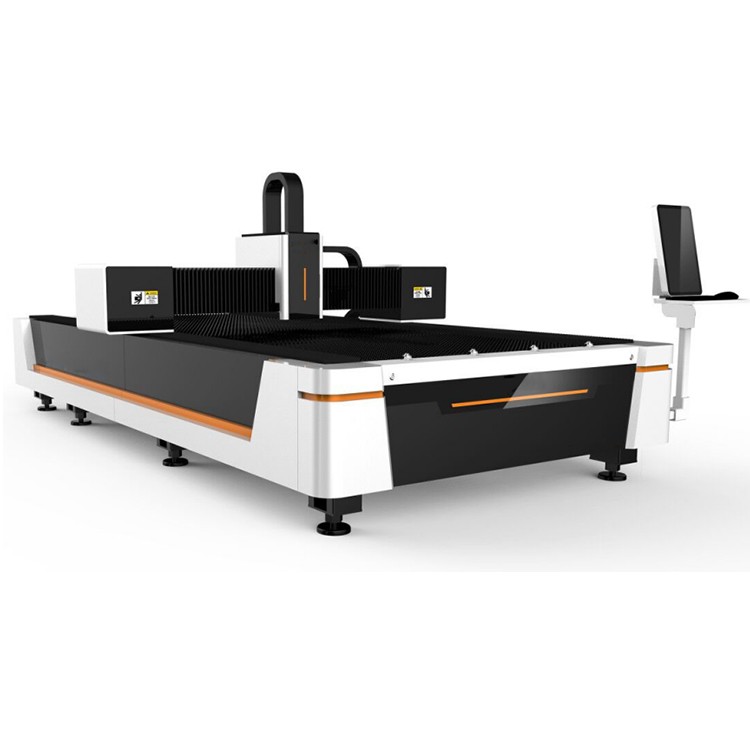

We are a professional laser cutting machine manufacturer with over 10 years of industry experience. Today, we would like to introduce to you how the technical features of laser cutting machine:

As one of the core equipments of modern industrial manufacturing, the technical characteristics of laser cutting machine determine its advantages in processing efficiency, precision and adaptability. Laser cutting technology utilizes a high energy density laser beam for non-contact processing of materials, which has significant differences compared with traditional mechanical cutting. The following from the beam characteristics, control system, applicable materials and processing methods, etc., to analyze the main technical characteristics of the laser cutting machine.
1, High energy density laser beams
The heart of laser cutting lies in the high-energy beam generated by the laser generator. After the laser beam is focused through the optics, high temperatures can be formed in a very small area, so that the material is rapidly melted or vaporized.
Beam quality: The high quality laser beam focuses the spot with a very small diameter and concentrates the energy, allowing for micron-level precision cutting.
Power Adjustment: The laser power can be adjusted according to the type and thickness of the material, low power is suitable for thin plate cutting, high power can process thick metal.
Continuous and pulsed modes: Continuous laser is suitable for fast cutting, while pulsed laser is suitable for high-precision piercing and fine processing.
2.Non-contact processing
Laser cutting does not require physical contact with the material surface, avoiding the problems of tool wear and material deformation in traditional machining.
No mechanical stress: No external force is applied to the material during the cutting process, making it suitable for processing thin plates or brittle materials that are easily deformed.
No tool wear: Traditional cutting tools will affect the accuracy due to wear and tear, while the stability of laser cutting is maintained for a long time.
Reduced pollution: Non-contact processing reduces the generation of debris and oil, especially suitable for industries with high cleanliness requirements.
3, High Precision and Complex Graphics Processing Capability
The precision of laser cutting far exceeds that of traditional processing methods, and it is able to realize the cutting of complex geometrical shapes.
Positioning accuracy: Modern laser cutting machines have a positioning accuracy of ±0.05mm to meet the demands of precision parts processing.
Complex contour cutting: Through Computer Numerical Control (CNC) systems, cutting of complex curves, shaped holes and microstructures can be precisely executed.
Repeatable Consistency: When batch processing, laser cutting ensures that each part is exactly the same size, reducing manual adjustments.
4, Wide material adaptability
Laser cutting can process a wide range of materials, including metal, non-metal and composite materials.
Metal materials: Carbon steel, stainless steel, aluminum alloy, titanium alloy, etc. can be efficiently cut, especially suitable for high hardness metals.
Non-metallic materials: Acrylic, wood, fabric, ceramics and other non-metallic materials can also be processed by specific wavelength laser.
Composite materials: Carbon fiber, glass fiber and other composite materials can keep the edges neat and avoid delamination under laser cutting.
5, Automation and intelligent control
Modern laser cutting machines are commonly equipped with automation systems to enhance productivity and processing flexibility.
CNC (numerical control system): The cutting path is controlled through programming, and CAD drawings are supported to be imported directly, reducing manual intervention.
Auto focus: The laser head can automatically adjust the focus to adapt to the cutting needs of different thickness materials.
Real-time monitoring: Some high-end models are equipped with sensors, which can detect the cutting status in real time and automatically adjust the parameters to ensure the processing quality.
6, Efficient processing and low energy consumption
Laser cutting is superior to many traditional processing methods in terms of speed and energy consumption.
High-speed cutting: The laser beam moves so fast that thin materials can be cut at speeds of up to tens of meters per minute.
Low Energy Consumption: Compared to plasma or water jet cutting, laser cutting consumes less energy per unit, making it more economical in the long run.
Less waste: Laser cutting has a narrow kerf and high material utilization, which is especially suitable for the processing of valuable materials.
7, Environmental protection and safety
Laser cutting technology meets the environmental requirements of modern industry, and at the same time has a high degree of safety.
Low noise: The laser cutting process is quieter and improves the working environment.
Reduced waste: Precise cutting reduces material waste and the waste generated by laser processing is easy to recycle.
Safety: Modern laser cutting machines are equipped with guards, emergency stops and laser shielding systems to ensure safe operation.
The technical characteristics of laser cutting machines make them an important tool for modern manufacturing. High-energy-density laser beams, non-contact processing, high-precision control, wide material adaptability and automated operation together constitute the core competence of laser cutting technology. With the continuous advancement of lasers, control systems and auxiliary technologies, the application range of laser cutting machines will be further expanded to provide more efficient and precise solutions for industrial manufacturing.
If you are interested in laser cutting machine, please contact us.
 Address:Room 1202, Detaitang Building, No. 118 Huaguang Road, Zhangdian District, Zibo, Shandong
Address:Room 1202, Detaitang Building, No. 118 Huaguang Road, Zhangdian District, Zibo, Shandong WhatsApp:+8615653328535
WhatsApp:+8615653328535 Wechat: +8615965331535
Wechat: +8615965331535  E-mail:zs@sdsmachinery.com
E-mail:zs@sdsmachinery.com